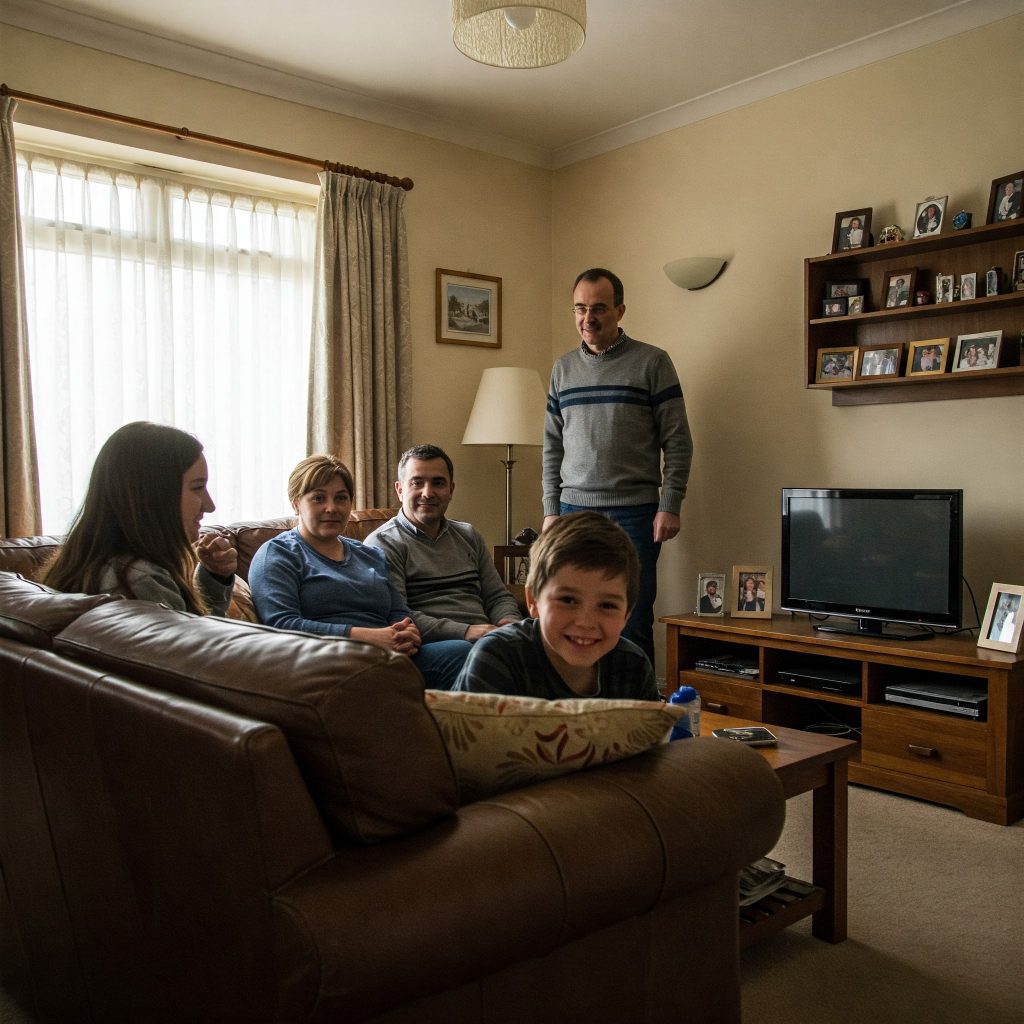Have you ever wonder what salary is middle class UK today? You’re definitely not alone. With rising costs, shifting job markets, and an economy that feels like a rollercoaster, trying to figure out if you’re “middle class” can feel like trying to hit a moving target. The term gets thrown around a lot, in politics, in the media, and even in conversations with friends — but what does it actually mean in terms of your salary?
In this article, we’ll break it all down in plain English. We’ll explore what salary is middle class UK, how lifestyle and location affect it. Ready to find out where you stand? Let’s get into it.
Defining the Middle Class in the UK
The term “middle class” can mean different things to different people. Some people use it to describe how much money they make, while others base it more on lifestyle or education.
Traditionally, it referred to professionals like teachers, doctors, and lawyers — basically anyone who wasn’t considered working-class or upper-class.
But nowadays, the waters are murkier. The middle class can include people in a wide range of jobs, living in very different circumstances. For some, being middle class is about financial security. For others, it’s about having choices — like going on holiday once a year or sending your kids to a decent school.
What Salary Is Middle Class UK: The Numbers
So, let’s get into the meat of it: What salary is middle class UK right now?
According to recent data from the Office for National Statistics (ONS), the median household income in the UK (after tax) is around £32,300. Generally speaking, middle class is considered to be households earning between 75% and 200% of the median income — so that’s roughly between £24,000 and £64,000 per year after tax.
If you look at gross (before tax) income, that puts the middle class somewhere between £30,000 and £80,000 a year for individuals. That range can stretch further depending on location, family size, and profession.

The Role of Location in Middle-Class Salaries
Here’s where things get interesting. That £60k salary might go far in parts of Yorkshire but feel tight in Central London. Location plays a massive role in whether someone feels “middle class.” The average London salary might be higher, but so is rent, transport, and food.
For example:
- In London, earning £60,000 may just cover basic needs and a few luxuries.
- In Newcastle, the same salary could allow for more savings, a mortgage, and yearly holidays.
This makes defining what salary is middle class UK even more tricky — because cost of living isn’t equal across the board.
Read also – Three Tips to Excel at Salary Negotiations
How Lifestyle Affects Middle-Class Perceptions
Is having Netflix and a car middle class? What about owning a house? Middle-class status isn’t only about income. Lifestyle choices — like whether you can afford private school, take two holidays a year, or have a pension — all factor into how people view themselves.
Someone earning £50,000 but paying £2,000/month in childcare might feel less financially stable than someone earning £35,000 with no dependents.
Case Study: Meet Sarah, a Middle-Class Nurse from Manchester
Let’s take Sarah, for example. She’s a 35-year-old NHS nurse from Manchester earning £38,000 a year. She owns a modest semi-detached house, drives a second-hand car, and manages one holiday abroad each year with her partner.
On paper, Sarah fits well within the middle-class salary bracket. But with rising energy bills, mortgage payments, and food prices, she often wonders why her bank balance doesn’t reflect what she thought “middle class” would look like. She’s not poor, but she’s definitely not living large either.
Her story mirrors thousands of others — people who technically earn a “middle-class” salary but often feel squeezed by modern-day expenses.
Salary Tiers Within the Middle Class
There’s a big difference between someone earning £30,000 and someone earning £75,000, even though both might be labelled as middle class. That’s why many experts break the middle class into:
- Lower-middle income: £30k–£45k
- Core middle income: £45k–£60k
- Upper-middle income: £60k–£80k
Each tier represents a slightly different lifestyle, level of savings, and access to services like private healthcare or education.
Changes in the UK Middle Class Over Time
The definition of middle class hasn’t stayed the same over the years. Back in the early 2000s, a salary of £30,000 was seen as quite comfortable for a single earner. Fast forward to today, and that same income might feel tight — especially with rent, energy bills, and general inflation climbing steadily.
The middle class has arguably shrunk in relative terms. While more people may technically fall into the income range, fewer feel financially secure. Some sociologists argue the middle class is “squeezed” — caught between the rising costs of living and stagnant wages.
The Impact of Inflation on Middle-Class Income
Inflation is the silent killer of the middle class. Even if your salary increases a little each year, if inflation outpaces those raises, your money doesn’t go as far.
Let’s say your salary went from £35,000 to £37,000 — sounds great, right? But if rent, fuel, and food costs have gone up by 10%, you’re effectively worse off than before. That’s what a lot of middle-class earners in the UK are experiencing right now. Salaries are rising slower than the costs of everyday life.
Is Being Middle Class Still Achievable Today?
It’s a fair question: is being middle class even realistic anymore? For millennials and Gen Z in particular, the idea of buying a home, saving for retirement, and raising a family on one income feels almost like fiction.
And yet, many still aspire to that middle-class life — not for the money alone, but for the security it represents. For some, that means adjusting their expectations: maybe renting long-term instead of buying, or cutting back on non-essential expenses.
Read also – Top Visa Sponsorship Jobs in the UK in 2024
Occupations Common in the UK Middle Class
Certain professions are traditionally associated with the middle class. These include:
- Teachers (average salary: £35k–£45k)
- Nurses (around £30k–£40k)
- IT professionals (£40k–£70k+ depending on experience)
- Civil servants and local government staff
- Small business owners and freelancers
These roles often come with stable, if modest, incomes and sometimes pensions or benefits. But again, location and job title can drastically shift someone’s experience within these ranges.
Comparing the UK Middle Class to Other Countries
If you’re wondering how the UK stacks up globally, you’re not alone. Compared to the US, UK middle-class salaries are generally lower, but healthcare and education costs are also lower here, which balances things out a bit.
In contrast, many EU countries — like Germany or the Netherlands — offer stronger tenant protections, better public transport, and more affordable housing, all of which shape what it feels like to be middle class there.

Financial Security and the Middle Class
Middle-class life used to mean stability. Today, that’s not a given. Many households in the middle-income range don’t have emergency savings or are one major expense away from debt.
A 2024 survey revealed that nearly 40% of middle-income earners in the UK have less than £1,000 in savings. That doesn’t leave much room for car repairs, a boiler breakdown, or even an unexpected bill.
How to Know If You’re Middle Class
Still not sure where you land? Here are a few quick checks:
- Income: Are you earning between £30,000 and £80,000 a year?
- Lifestyle: Can you afford occasional holidays, own a car, and pay bills without constant stress?
- Stability: Do you have some savings or a pension plan in place?
If you answered yes to most of those, you’re probably in the middle class — at least by UK standards. But don’t worry if not; these lines aren’t set in stone, and your circumstances can always change.
Conclusion
Understanding what salary is middle class UK isn’t just about numbers — it’s about context. It’s about how far your money goes, where you live, your job, and what kind of lifestyle you can afford. While the income range of £30k to £80k gives us a rough guide, the lived reality of being middle class can vary wildly.
In a world where economic pressures are constantly shifting, being middle class is less about a fixed salary and more about maintaining balance — between earnings, spending, and aspirations.
So where do you stand? Share this article with a friend and see how your experiences compare. Start tracking your finances, review your lifestyle, and take control of your financial future. You may be more middle class than you think.
FAQs
1. What is considered middle class in the UK 2025?
Middle class typically includes individuals earning between £30,000 and £80,000 per year, depending on location and lifestyle.
2. Is £40k a year a middle-class salary?
Yes, £40k is considered a solid middle-class income, especially outside of London or the South East.
3. Does living in London change your class?
It can affect your perceived class — high living costs mean a middle-class salary might not stretch as far in London.
4. Can a single person be middle class?
Absolutely. Class is more about income and lifestyle than family size. A single person earning a steady income can be middle class.
5. What jobs put you in the middle class?
Jobs like teaching, nursing, IT, civil service roles, and small business ownership commonly place people in the middle-class bracket.
